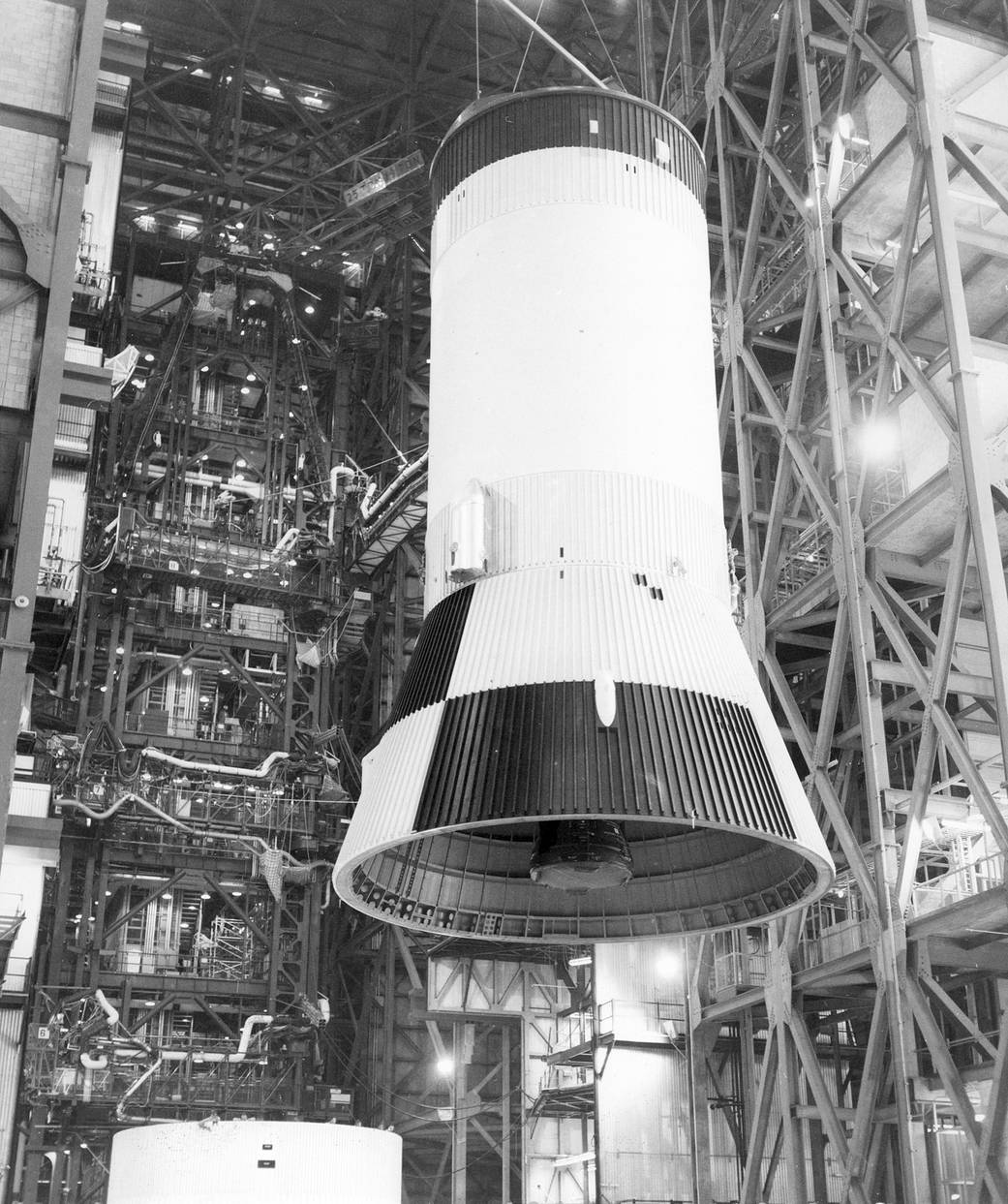This week in 1967, the Saturn IB S-IVB-209 stage was successfully static-fired for a mainstage duration of 465 seconds in the Beta I test stand at Douglas Aircraft’s Sacramento Test Operations facility. The firing was terminated by liquid oxygen depletion cutoff as planned. The S-IVB stage was developed under the direction of NASA’s Marshall Space Flight Center and was powered by one J-2 engine capable of producing 225,000 pounds of thrust. Here, S-IVB-506, used on the Apollo 11 mission, is hoisted in the Vehicle Assembly Building at NASA’s Kennedy Space Center for mating with the S-II, or second, stage of the Saturn V rocket. Now through December 2022, NASA will mark the 50th anniversary of the Apollo Program that landed a dozen astronauts on the Moon between July 1969 and December 1972, and the first U.S. crewed mission — Apollo 8 — that circumnavigated the Moon in December 1968. The NASA History Program is responsible for generating, disseminating and preserving NASA’s remarkable history and providing a comprehensive understanding of the institutional, cultural, social, political, economic, technological and scientific aspects of NASA’s activities in aeronautics and space. For more pictures like this one and to connect to NASA’s history, visit the Marshall History Program’s webpage. (NASA)
1 min read





























